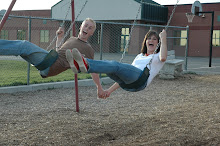 Filled with clocks, telescopes, sextants and other instruments of old methods of navigation, the Greenwich Royal Observatory has been the headquarters of astrology, time and navigation for centuries. Situated directly over the Prime Meridian, which is artificially extended in laser form across the
Filled with clocks, telescopes, sextants and other instruments of old methods of navigation, the Greenwich Royal Observatory has been the headquarters of astrology, time and navigation for centuries. Situated directly over the Prime Meridian, which is artificially extended in laser form across the
The Royal Observatory was established by King Charles II in 1675 for the specific purpose of “rectifying the tables of the motions of the heavens, and the places of the fixed stars, so as to find out the so-much-desired longitude of places for the perfecting art of navigation” (Jones 349). Prior to the establishment of an intensive research and discovery program at Greenwich, measurements of longitude did not exist and sailors and travelers were left to find their way using only latitudinal coordinates. Also at this time, the most accurate star catalogue available included only one thousand stars, of which only seven hundred and seventy seven had been properly and extensively observed. The best tables to giving the position of the moon were liable to errors as great as twenty degrees (Jones 349-350). All of this would rapidly change with the patronage of King Charles II and the increased focus on discovering effective means of navigation and coordination headed at the Greenwich Royal Observatory.
using only latitudinal coordinates. Also at this time, the most accurate star catalogue available included only one thousand stars, of which only seven hundred and seventy seven had been properly and extensively observed. The best tables to giving the position of the moon were liable to errors as great as twenty degrees (Jones 349-350). All of this would rapidly change with the patronage of King Charles II and the increased focus on discovering effective means of navigation and coordination headed at the Greenwich Royal Observatory.
On March 4, 1675, John Flamsteed was appointed astronomical observer at the newly-erected Observatory at
Flamsteed owed his appointment to the patrons of the Observatory: Sir Jonas Moore, St. Piere, Sir Christopher Wren, who was also the chief architect and built the impressive Octagon Room, and King Charles II. From these men Flamsteed was endowed with three clocks, a quadrant and two telescopes, all of which are still visible in the Observatory which has been converted into a museum (Chescinsky 309). From this time forward many important decisions have been made concerning time and navigation. For example, the concept of daylight savings time was conceived by Englishman William Willett in 1905 during one of his pre-breakfast horse rides. He observed, to his dismay, that because of the time, many Londoners slept through what he considered to be the best part of a summer day. Eventually, after tirelessly lobbying his entire life for the passage of Daylight Savings Time, Winston Churchill, in coordination with members of the Royal Observatory, made Willett’s dream a law (Rooney).
All of these great accomplishments are truly only part of what
Works Cited
Cescinsky, Herbert. "Flamsteed's Clocks from
Jones, Harold Spencer. "The Royal
Rooney, David. Royal Observatory Commemorates William Willett. Petts Wood & District Residents' Association. Retrieved on 2008-06-04.

No comments:
Post a Comment